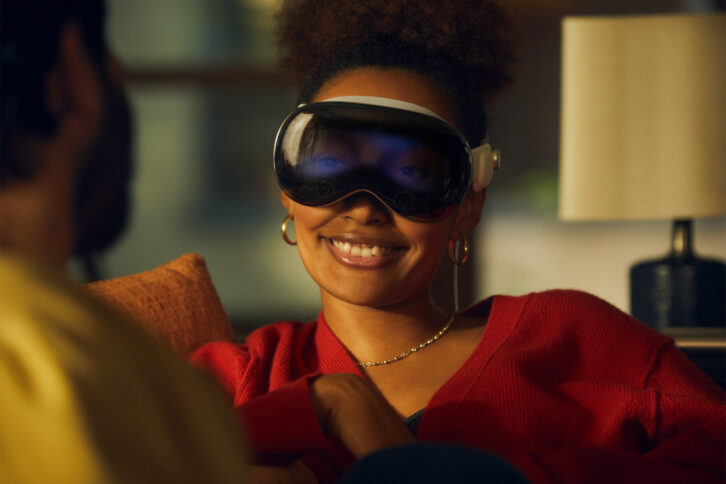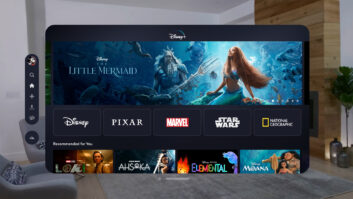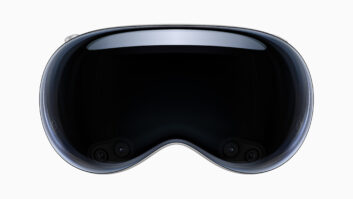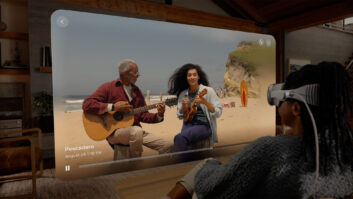It’s here – after months of anticipation, the Apple Vision Pro is finally available to buy. But as a device that must be worn, and that is both relatively heavy (when compared with glasses) and even uncomfortable (after a while), can it ever be a general, all-purpose computing device as it was pitched in Apple’s initial promo video? And will it ever replace other devices like smartphones and even TVs? To answer these questions, it’s worth looking back at how the smartphone revolution began and where it has led.

Could it disrupt like the iPhone did?
In a lot of ways, the Apple Vision Pro is similar to the first iPhone, which at launch didn’t have much content and barely any apps, but its touch screen and simplified UX paved the way for a new generation of devices.
But look what’s happened in the years since iPhone was launched – mobile is now the undisputable number one platform for video. And not only for traditional long-form content like the videos on Netflix. It also created a new space for short-form video content and platforms like TikTok, Instagram, and the rest of the social media channels to exist and thrive.
In much the same way as the iPhone pioneered a whole new way to engage with technology and information, Vision Pro is introducing us to spatial computing where we will seamlessly interact with information all around us, guided by our eyes, hand gestures, and voice. It would be naive to imagine that our current habits, behaviour and the way we engage with technology will remain the same forever. New generations want different things, and exactly how we will be entertained in the future is yet to be seen.
Can it really be for general purpose use?
The Vision Pro is a competitor or even a complement to the laptop, giving users multiple apps that can be opened simultaneously in an infinite canvas. It can also be paired with a keyboard and mouse for more comfort, allowing professionals to use it for their work for real.
We’ve all seen the goofy videos currently doing the rounds of people using the Vision Pro outside, but it’s clearly only intended to be used indoors. This won’t prevent users and developers from taking a glimpse into the crazy implications it will have as a true-wearable device. It’s no secret that Apple aims to have glasses (or contacts) for more versatile use cases. But I think we’re still a few generations of devices away from this.
We’ll likely have lighter, better, and lower price point versions of the Apple Vision Pro, which, combined with massive support from developers like us, will make everyone understand the real value that this device can provide.
Is it time for other devices to move over?
Will it replace the iPhone? Probably not. But I do think it will replace TV, primarily because it isn’t subject to the same limitations as a TV.
Firstly, the Vision Pro allows you to put screens wherever you want in your home so you can watch a casual video while folding your laundry or cooking a meal – just as you can do with a smartphone but on a much bigger and more immersive scale.
Secondly, users will be able to engage with content in a way that TV cannot replicate. During its initial presentation, Apple showed us how video entertainment could look in just a few years through conceptual videos of Disney and sports content. Already these concepts are turning into reality. NBA has just released its immersive app for the Vision Pro, complementing live video with other contextual features such as live stats or the possibility of watching multiple games simultaneously. It also announced that it will support courtside games with immersive video, something that is already available on other platforms such as the Meta Quest.
Lastly, the audience will demand more immersive experiences that will get them closer to the content they prefer, whether it’s sports, TV shows, or documentaries. And Apple Vision Pro will be able to deliver. New production methods will emerge, new 3D experiences will complement the video content, eventually bringing fans together to share their passion.
The future is already here
This is only the very beginning of the Vision Pro and spatial computing, and I think most people are unaware of the significance of Apple’s latest offering. In time, the Vision Pro will become the ultimate video platform. Cinema-size screens, 3D audio, and contextual stats will make people prefer the headset over the TV.
Spatial computing is the future, and the Vision Pro has opened the door and welcomed us in.




